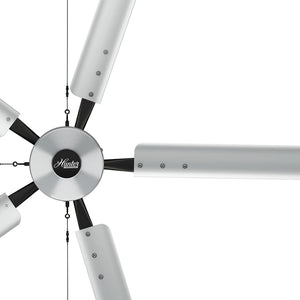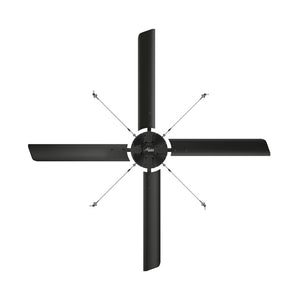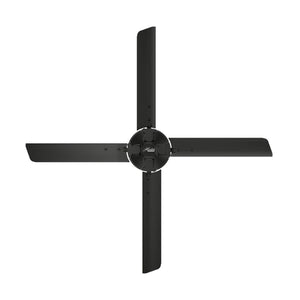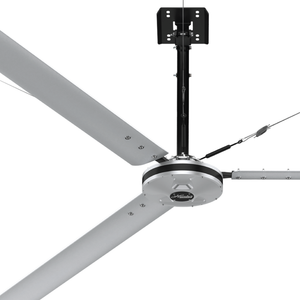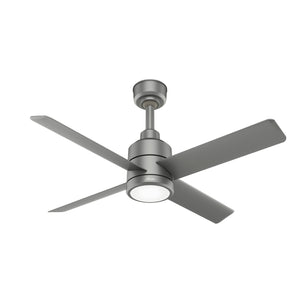Industrial Fans For Dairy Barns
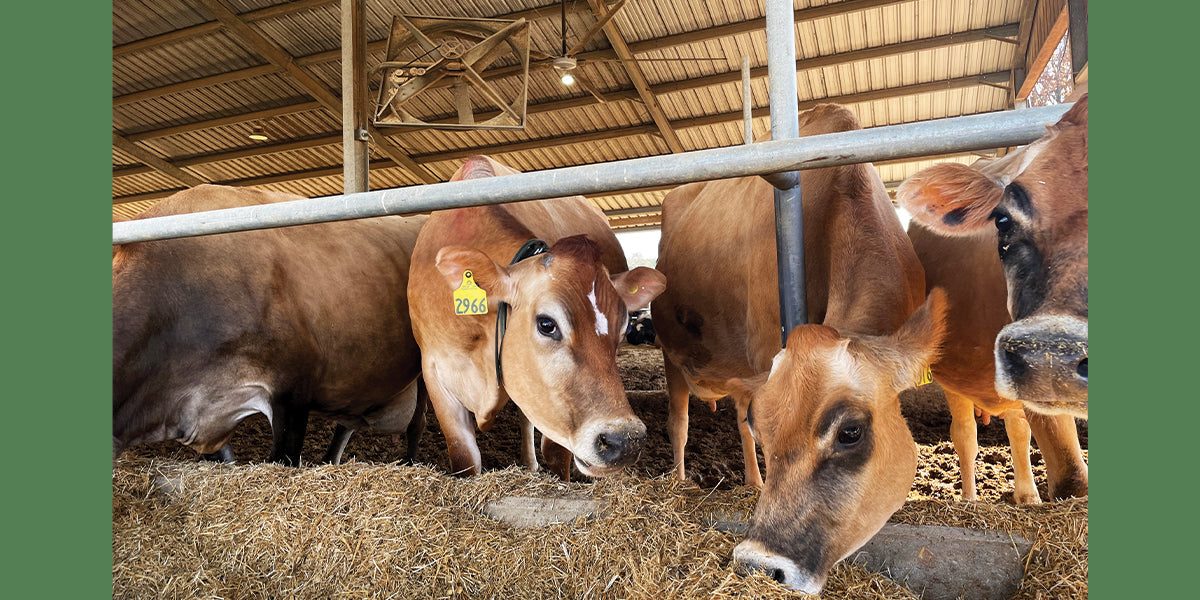
Controlling temperature, moisture, and ventilation is critical in dairy farm applications. Ensuring a comfortable and healthy herd leads directly to increased production. Installing large diameter industrial ceiling fans is an easy and cost-effective way to take control of a dairy farm environment.
Case Study: Turner Dairy
Back in early 2020, brothers Justin and Jeffrey Turner decided to install Hunter industrial barn ceiling fans in their dairy farm, Turner Dairy, in rural Lebanon, TN. They were looking for a way to ensure that their dairy cows would stay comfortable and productive throughout the year.
“The thing you need to know about cows is, they are hot before I’m hot, and when I’m cold they are not necessarily cold,” said Justin Turner. He went on to explain how, counterintuitively, when it gets hot out, the cows tend to bunch together, which only makes the heat issue that much worse. Dairy cows produce milk the best when they are lying down, which they are less likely to do when they are uncomfortable.

Increased Animal Comfort & Productivity
In southern states like Tennessee, this makes things particularly difficult on a dairy farm. The National Library of Medicine states that, "a rise in ambient temperature above the thermal neutral zone decreases DMI (dry matter intake) and milk production. However, heat stress can decrease DMI by cows more than 50 percent compared with a thermoneutral environment and the reduction in DMI to acute heat stress increases for cows with higher milk yield" Prior to installing Hunter industrial ceiling fans, the Turner brothers attempted to deal with their problem using old-fashioned panel fans. “The panel fans have been a pretty big disappointment,” explained Turner. “Out of the box, two motors didn’t work. It took a year to get a replacement… you can hear them all over the farm. The electric bill almost doubles.”
The Turner brothers chose to install three Hunter TITAN industrial fans in their dairy cow enclosure. These fans are known as HVLS fans, which stands for high-volume, low-speed. These fans are HUGE, especially when compared to the average residential ceiling fan, with the largest measuring 24-feet in diameter. Their large size allows them to generate MASSIVE airflow, and they can achieve a nearly 10-degree cooling effect, all while having a negligible effect on the electric bill (especially when compared to those panel fans).
The benefits of installing HVLS ceiling fans or horse barn ceiling fans in dairy farms to increase animal comfort have been well documented. The Ministry of Agriculture, Food and Rural Affairs cites two studies that “conclude HVLS fans reduced heat stress in dairy cattle. They also conclude that these fans used less energy than [traditional] fans and were much quieter.”
Turner Dairy utilizes a specific type of animal enclosure known as a compost bedded pack barn. In short, this type of barn makes use of dry wood shavings or sawdust as a bedding for the livestock. This type of material makes the environment comfortable for a lactating cow but can also lead to excess moisture and microbial buildup. It is exceedingly necessary that these environments be well ventilated and properly maintained to keep the cows healthy.
The University of Kentucky has backed this up as well, “Properly positioned fans help cool cows and dry bedding material… When not enough fans are used, dead spots, with little airflow will result. Cows will not rest in these areas of the barn. Dead spots create conditions where cows bunch or congregate in certain areas of the barn. This scenario increases heat stress and impairs compost performance with excessively wet and dry areas.”
Cow Health and Disease Control
In addition to having an overall more comfortable herd, the Turners have also noticed another benefit: less illness. “It seems like our instances of pneumonia has been a lot less in the winter… I can’t help but think that being able to move a little air all the time is helping their respiratory systems.” So, it seems the upsides of installing HVLS fans doesn’t end in the cooler months.
“If it is going to be above fifty [degrees] at night, I will just leave the fans [on high] blowing down on them. In the wintertime we will turn them down halfway and reverse them.”

Other dairy farms have noticed that the decrease in volume, as compared to other fan options, has contributed to reduced stress. “The continual circulation of air from Hunter's industrial ceiling fans has secured a comfortable temperature across the board for both workers and dairy cows,” said Sjouke Plantinga of Pleasant Hills Dairy in Mount Vernon, TX. “The efficiency and low wattage of Hunter’s fans has been a huge cost saver for me.”
Next Steps
Since installing the Hunter TITAN industrial fans at Turner Dairy in 2020, they have been running essentially non-stop, with zero maintenance or cleaning, for about three years. Justin noted how easy the controls are to use, and how all three fans can be controlled from one location. “When it gets cold in the winter, I will just reverse them and run them real slow just to change the air out.”
“Those fans have a use 24/7, 365,” said Turner.” “They will never be turned off.”

 100% Secure Payments
100% Secure Payments